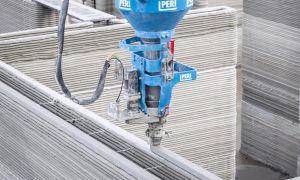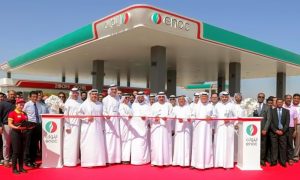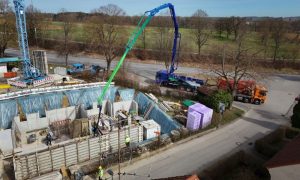Contractors urged to take waste seriously
While UAE municipalities work to tackle the Emirates? construction-waste management problem, many contractors remain uncooperative say experts.

It seems that the UAE governments are addressing the environmental impact of millions of tons of construction waste being sent to landfill annually, but there are still major steps that need to be taken.
In Dubai, an estimated three million tons of waste from construction processes is generated yearly, according to Dubai Municipality director of waste management Eng. Hassan Makki, who says construction waste is a “major priority” for the Emirate’s government. He acknowledges that the construction slowdown caused by the global economic downturn has resulted in 10-15% less waste being produced yearly, but Dubai still has a higher rate of generation compared to cities worldwide, says Makki.
To reduce the growing demand for landfill space and to combat the negative environmental impacts of trucking waste across the Emirate, Dubai Municipality is focused on encouraging waste avoidance and recycling.
“We’re working with the private sector and recently formed a public private partnership with Emirates. Recycling, which has built a waste treatment facility to segregate and recycle the waste,” says Makki.
But Emirates Recycling says while waste avoidance and recycling are essential, these processes do not constitute a sustainable waste-management solution unless coupled with a greater market awareness of the environmental consequences of negligence and crucially, the reuse of waste onsite.
The construction and demolition waste division (CWD) of the Emirates Recycling plant has the annual capacity to convert more than 93% of Dubai’s construction waste into reusable road and construction base aggregate.
Around 500 truckers a day haul the construction and demolition waste to the facility, which is situated around 40 kilometres outside Jebel Ali, where trained staff inspect the debris. The material is then pre-sorted before being crushed. The final stage of wind sifting and screening the crushed material removes any small contaminating particles, which may have passed through the segregator.
The end product is a material that can be reused for many purposes, including as aggregate for pre-casting, building barriers, ramps, partitions and even for a light concrete base, suggests Emirates Recycling technical consultant Bruno Panetta.
Importance of segregation
However, there are a number of problems currently encountered with this process. Firstly, Makki says only 40-50% of Dubai’s construction waste is making its way to the facility. And the waste that does get there has often not been properly segregated into different materials onsite; the most efficient way of processing the waste.
Panetta says the company is preparing a programme to educate contractors on the process of pre-segregation. “We need to improve industry knowledge of waste management and get the right message out there. The government will help us to improve the process by regulating compliance,” adds Panetta.
Unfit for purpose
But Makki says a major issue is that the end product has still to be certified as a legitimate building material. “How can it be used if it is not certified? All the material used in any building has to be certified by the Dubai Central Laboratory after a lot of testing to make sure that it is actually reusable,” he comments.
So while the facility is producing millions of tons of this ‘clean’ end product, there is currently no market demand for it and contractors continue to import virgin materials from elsewhere in the region and abroad. Consequently, Emirates Recycling is applying time and resources to studying the final application of the material and it appears that there is light at the end of the tunnel as Makki anticipates a “major breakthrough in terms of certification by the end of the year”.
But once the end product has been certified for reuse, the focus must then be to encourage more contractors to take a responsible approach to waste management in construction. “Reform is needed to be taken by the construction industry to manage waste more effectively, provide safer and more productive sites; consequently reducing their costs and demonstrating how economic advantages come with environmental consciousness,” Emirates Recycling CEO Neil Roberts stressed at the Middle East Waste Summit last month.
The company asserts that it is essential for government to look at various incentives that would persuade companies to abandon their current practices for more environmentally conscious ones, such as those required to obtain LEED accreditation.
“Policy and legislative fiscal drivers will need to be at the forefront of this movement and encourage companies not just to recycle, but to also reuse recycled materials,” adds Makki. “We need support from the government and the message to industry is to be part of the commitment,” says Panetta.
Relinquishing responsibility But who does responsibility for waste management fall on in the construction process? Bee’ah The Sharjah Environment Company, which receives approximately two-thirds of Sharjah’s total waste, says that it has to start from the design process.
“Buildings have a lifespan and can be designed for disassembly for easier segregation and more efficient disassembly when the time comes,” explains Bee’ah director environmental responsibility Jeremy Byatt.
He says designers and architects should think more intelligently about designs, for example an arched window frame generates more waste during the construction process when the shape is cut out than a square window frame.
Furthermore, he says: “The project manager is integral to waste management. When working to deadline the attitude towards waste is all too often to ‘just get rid of it’, but the project manager has the responsibility to ensure waste is segregated onsite.”
This is the message Byatt is communicating to its existing construction clients and says that eventually there will be a higher price for waste going to landfill than segregated, reusable and recyclable waste.
And it seems that the problem is not confined to the Middle East. US-based project manager Jeff Bunger says he
cannot believe the items he finds inside construction-site dumpsters. “When I first started in construction, anything and everything was going in. Now, contractors and owners are being required to keep a close eye on what is being thrown away.”
Bunger says he watches what is being thrown away and does everything within his power to get rid of waste responsibly or reuse it onsite, but in the US, each state already has its own regulation outlining the accepted method of waste management in construction. .
Back in the UAE, Makki concludes that reused material must be certified, secondly we have to raise industry’s awareness of sustainable waste management and finally we must ensure the reuse of materials is economically feasible.
WHY RECYCLE AND REUSE
– Recycling construction and demolition waste (CWD) onsite reduces the material hauling and disposal costs
– Regular recycling pickup of materials from the construction site can keep sites cleaner and increase work efficiency and safety
– As awareness increases about the importance of green building, the fact that effective CDW recycling is practiced, is a business advantage for environmentally-conscious customers who are looking for this practice
– Costs of purchasing recycled material is lower than using virgin materials
– Given the rapid expansion of Dubai, there is the need to conserve the use of space needed for landfills. Valuable land can certainly be used more effectively
– Using recycled CDW limits the costs related with managing air and water pollution, as well as energy use
– Costs are reduced as material does not need extracting, processing and transporting like virgin raw materials















